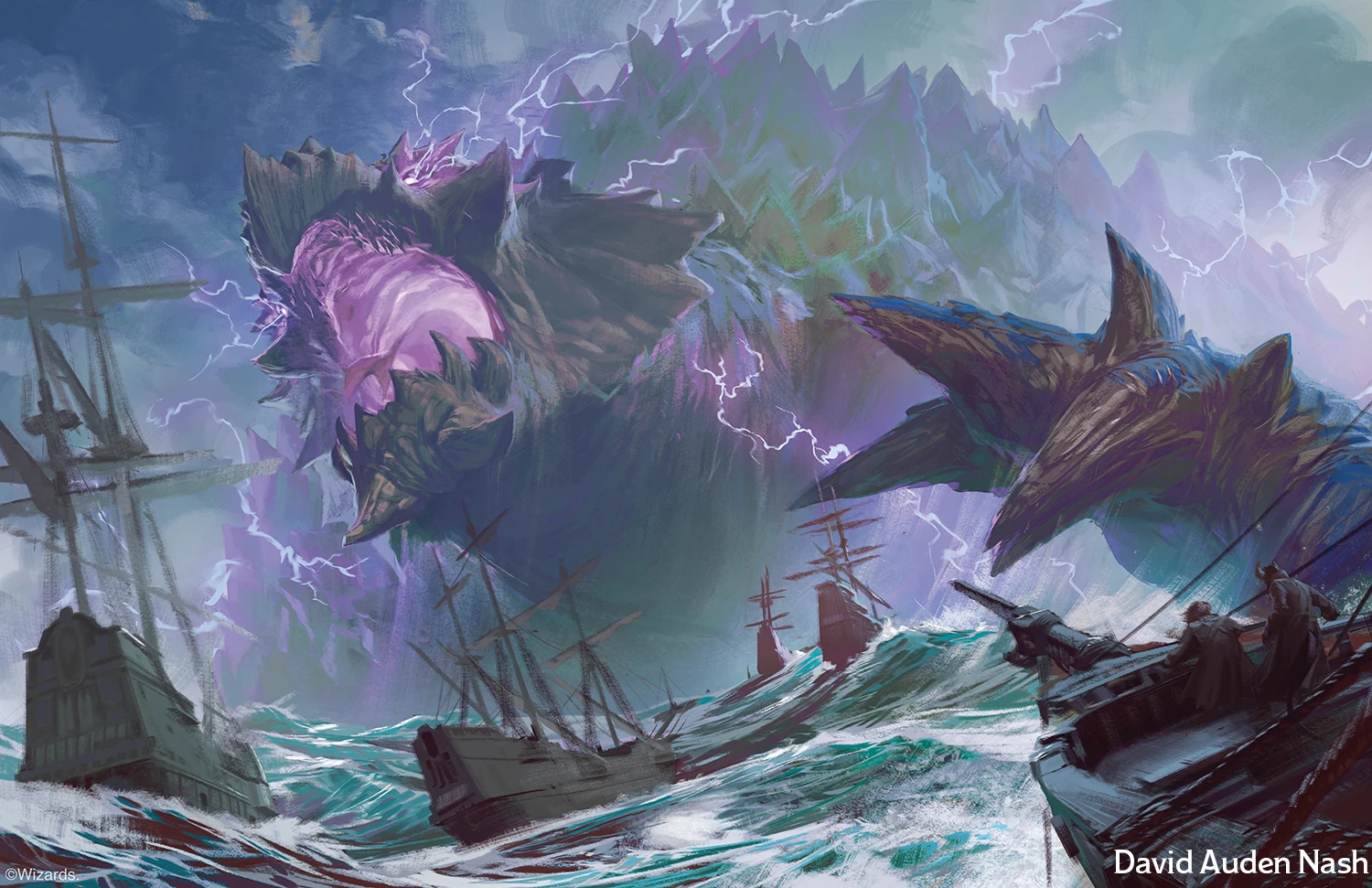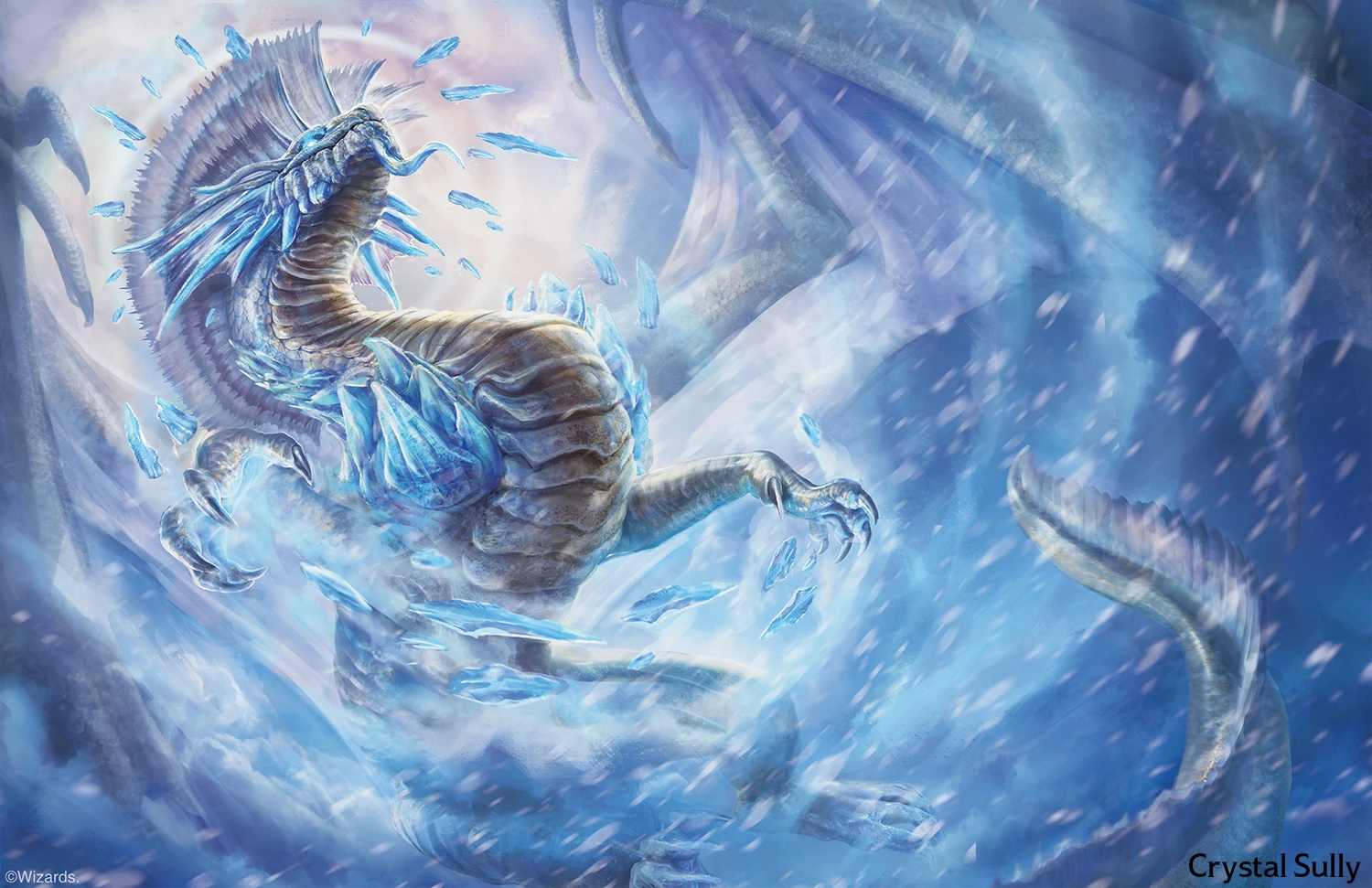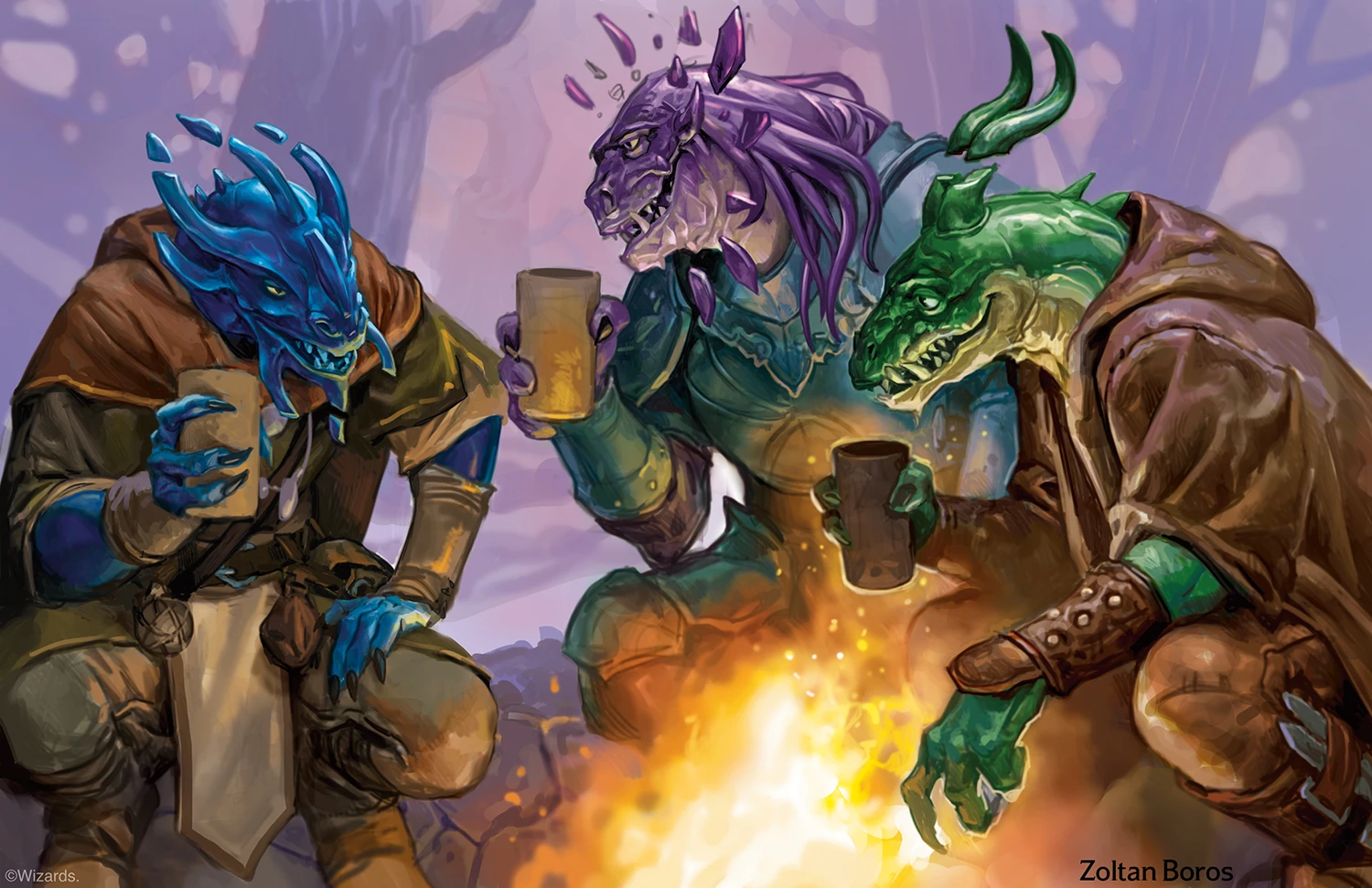Dragons are the most iconic creatures in Dungeons and Dragons – they are in the name of the game, after all. Since the beginning of 5th edition, dragons have been recognized as amongst the toughest brutes the players can go up against. In the Monster Manual, ancient dragons occupy the thin ranks of over-20 challenge ratings. They received their own set of adventure books with the first set of hardback adventures, Hoard of the Dragon Queen and the Rise of Tiamat, which would eventually be republished as a single book entitled Tyranny of Dragons. Along with true dragons (the five chromatic and five metallic types) other dragons and dragon-like creatures have been rolled out in the Monster Manual and succeeding expansion books. But, up to now, the iconic dragon has not received its own book in 5th edition. Starting in Second edition, and popping up again in 3rd, and again in 4th, the dragon has been the star of the Draconomicon, an in-depth study of all things draconic in D&D. Additionally, a third group of true dragons, the gem dragons, has been lurking in the periphery of previous editions of D&D, but had yet to make an appearance in 5E. Until now.
Fizban’s Treasury of Dragons is the newest hard-back supplement for 5th edition D&D. It takes its place on the shelf next to the other books attached to famous names, like Mordenkainen’s Tome of Foes and Tasha’s Cauldron of Everything. Like others in this unofficial series, Fizban’s is a rules supplement, not an adventure. It presents both players and DMs with a trove of additional game information ranging from character classes and magic items to how to role-play a dragon and what its treasure hoard should be comprised of. Published with a standard (available anywhere) and an alternate (FLGS-only) cover, this book is an essential guide to all things draconic in 5th edition D&D. And who better to guide readers through such auspicious content than Fizban, the human wizard disguise of Palidine, the dragon god from the Dragonlance saga?
Starting with the Elegy of the First World, a poem that may or may not describe the true history of the dragons, Fizban’s opens a ton of options for players and DMs alike when it comes to dragons and dragon-related content. Players will find plenty of information for creating characters either directly related to dragons, or just sort of involving them. There is a section on dragonborn races that adds gem dragon ancestry to the dragonborn options and a chromatic warding action to all three main types of dragonborn (chromatic, gem, and metallic). Monks gain a new subclass, Way of the Ascendant Dragon, which focuses on unlocking the power of dragons within oneself. While Rangers gain Drakewarden, a subclass that gets a drake companion to pal around with. There is a brief, but inspiring section with ideas on tying your character to dragons, to give a character just the right amount of draconic flair. Finally, players also have three new draconic feats to consider. While this small amount is all that is purely player focused, the next section of the book has treats for players and DMs alike – magic.
The chapter on dragon magic includes seven new dragon-themed spells for players, including one usable by artificers in the Eberron setting. There are a few pages of now dragon-related magic items, but the pivotal dragonlance makes an appearance as well. Hoard magic items are introduced in this section as well. Hoard magic items are items that have been lying around in a dragon’s hoard for so long they have become infused with the dragon’s magic and become magical (or more magical) as a result. Finally, there are draconic gifts, which fall into the same niche as supernatural gifts, blessings, marks of prestige and epic boons. Draconic gifts are little bits of draconic power invested into a player character through a dramatic occurrence (such as the death of a dragon). The death of a dragon is a highlighted in the book as a significant event that can imbue those nearby with dragon-based powers, so to help DMs build up to that, there is plenty in the rest of the book to do just that.

The remaining three sections of the book (about 85% of the pages) are dedicated to inspiring DMs to make the dragons in their world’s epic. The first section, entitled Dragons in Play, focuses on making dragons an integral part of the world. Tables and tips help DMs develop a dragon’s appearance and personality to make roleplay sessions with a dragon as memorable as a fight with one. The section on dragon followers helps the DM to underpin the interactions between dragons in their world and the rest of the world. Here, a DM can find a way to take a dragon out of its den and give it a reason to interact with their world, maybe as a crime boss, maybe as a noble or even a god. Then the section builds on these ideas and leads the DM through developing encounters, adventures and finally campaigns that center on dragons, where PCs can get themselves into sticky situations inside a dragon’s lair trying to get a piece of that hoard.
If a DM places a dragon into the world, that DM needs to be prepared to deal with the PCs invading its lair, and maybe on a lucky day, walking away with some loot from its hoard. Fortunately, Fizban’s addresses that directly with a section appropriately called, Lairs and Hoards. The first half of this section gives DMs a tour of the potential contents of a dragon’s lair and its potential effects on the surroundings, expanding on information already in place in previous publications. The second part of this section recalls the old-school Dungeon Masters Guide with table after table of hoard contents to help a DM really make the spoils for killing a dragon meaningful and unique.
The next, and largest, largest section of the book, the Draconomicon, (a callback to the books on dragons published for 2nd, 3rd, and 4th editions) addresses twenty dragon types and capitalizes on the previous sections about roleplaying dragons and their lairs. There are sample lairs in this section and additional notes on incorporating a specific type of dragon into a game. DMs will likely find this section extremely useful when filling the corners of their world with dragons.

The last section of the book is the bestiary. This portion provides the stats blocks for the five types of gem dragons, faerie dragons, deep dragons and more. It’s in the bestiary that it becomes clear that dragons are the iconic creature of the game. Whereas in the past, the toughest ancient dragons maxed out the challenge rating at 24 (except for a few named dragons from specific adventures), the greatwryms push the challenge ratings up to 28, making an encounter with a greatwrym second only to an encounter with the Tarrasque or an aspect of Tiamat or Bahamut.
The Gem Dragons in this book never receive an introduction. The book discusses them as if they have always been part of the 5th edition ruleset. While they have been around for years, starting out as articles in Dragon Magazine and then showing up in Monster Manual II in 3rd edition, they weren’t present in 5th edition until Fizban’s. In the 5th edition Monster Manual both the chromatic and metallic dragons are introduced with an eight-paragraph section that outlines how they are as a group and what Tiamat and Bahamut mean to them. It would be nice to have a similar eight paragraphs regarding the Gem Dragons and their progenitor, Sardior. By reading through the book, one can piece together a general idea of what the gem dragons are like but having a small section introducing them would have been nice.
Steven spends his days working deep in the bowels of a government building and evenings with his wife and daughter. He spent the last quarter century working in and around the US military. His passion is tabletop games. You can catch him playing, talking, reading and writing about RPGs, wargames, board games, party games and card games. Steven is from Texas, but currently lives in Virginia.
Mike Dunn is the old man of Gaming Trend, having cut his teeth on Atari consoles and First Edition Advanced Dungeons & Dragons back in the day. His involvement with Gaming Trend dates back to 2003, and he’s done everything from design and code to writing and managing. Now he has come full circle, with a rekindled passion for tabletop gaming and a recent debut as Dungeon Master (nearly forty years after he purchased the original DMG).

Fizban's Treasury of Dragons is a delight to read and we can't wait to use it in play. While the tight focus on dragons and dragon-adjacent creatures and lore may limit how much these rules actually get used, the wealth of content for a campaign steeped in these magnificent creatures sets an example for future deep-dives that Wizards of the Coast may have down the pipe. Who doesn't want a book chock full of dragons?
PROS
- Leans heavily into a multiversal concept, with Dragons being a key component.
- Brings the Drangonlance lore and setting back into the spotlight for the first time in 5E.
- Reintroduces Gem Dragons as an equal dragon type to chromatic and metallic dragons.
- Treats dragons as characters in their own right, with an eye on how DMs can run them as such.
CONS
- The tight focus on dragons can limit the utility of the volume.
- Gem dragonborne are introduced before Gem dragons, and they don’t even get the proper intro that the chromatic and metallic dragons did in the Monster Manual.
See below for our list of partners and affiliates:

























